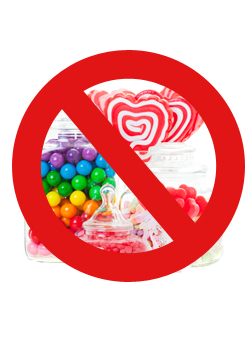
The high fiber fruits are great for IBS. High fructose levels are a common cause behind abdominal pain. All fruits, including bananas, citrus and dried fruit, are low in fructose. Cruciferous vegetables, such as cauliflower and broccoli, contain high levels of sulfur. Onions should be avoided if you have IBS.
IBS patients should not eat oranges. They contain too much citric acid, which can cause irritation. Kiwis have a lower sugar content than oranges which makes them a great fruit for IBS sufferers. The good source of Vitamin C is also found in apples and strawberries, but they are high in fructose. This can trigger IBS flare ups.
High fiber fruits are the best. These fruits are high-fiber and may cause IBS symptoms. Peeling fruit can help reduce symptoms flare ups. There are many types of fruit that are suitable for those with IBS, so you can find the ones that are good for you. They can be a great source of vitamins and minerals.

Passion fruit can be enjoyed in moderation as a source of soluble fibre. It should be eaten in moderation along with other fruits high in soluble fiber. You can also find fruit rich in fructan as well as FODMAPs. The Monash University FODMAP app can be used to determine how many fibers are in each type of fruit. Also, fennel's seeds may help relieve constipation if you love it.
IBS symptoms can be aggravated by soda, high fructose corn syrup, and sodas. These are just a few of the many fibers found in fruit, which is high in soluble fibers. IBS sufferers will find bananas and raisins especially helpful. Both are high in fiber, which can ease constipation. You can try a small amount each of these foods to get an idea of which ones are best. Once you know which foods work best for you, it's time to start trying them.
Apple is a great fruit for people with irritable bowel syndrome. The fiber and vitamins in apple juice help with digestion. Apple juice can help maintain a healthy gut. The anti-inflammatory, antioxidant and digestive properties of the cumin herb are also beneficial for those with IBS. Its seeds possess anti-inflammatory properties and carminative abilities. Cumin seeds are an excellent source of fiber and good for the irritable bowels.
A fruit suitable for ibs would also be a good choice. Apples are high in fiber and contain vitamins that keep the digestive system healthy. Irritatable bowel syndrome symptoms can be eased by eating an apple each day. Cumin seeds can be used to relieve symptoms and control symptoms. If you suffer from irritablebowel syndrome, apples may be an excellent option.

Fruits are high in fiber and rich in vitamins, minerals, and other nutrients. Avoid foods that have high levels of fructose like sweets, processed snacks, and so on. Keeping a food diary is important for helping you decide which foods are safe for you and which should be avoided. You should consult your doctor if you are not sure which foods are triggering your symptoms.
While eating a diet high in fruits and vegetables is beneficial for people with IBS, you should avoid foods with high fructose levels. These foods can cause IBS symptoms to worsen by high fructose levels. For this reason, you should avoid foods with high fructoses, such as soft drinks and processed foods. You will not feel worse if your symptoms aren't aggravated by a low-fructose fruit.
The best fruits for IBS are those that are easy to digest. Blueberries are a good source of dietary fiber, as well. Blueberries can be eaten raw for improved digestion. They are rich in other nutrients, including vitamins and minerals. Always eat fruits and veggies to prevent ibs
para: Other fruits with an anti-inflammatory action are peppermint or fennel. They are full of dietary fiber, antioxidants, and other nutrients.
FAQ
How to measure body fat?
A Body Fat Analyzer will give you the most accurate measurement of body fat. These devices are used for measuring the percentage of body fat in people who want to lose weight.
How can I tell what is good for me?
Listen to your body. Your body is the best judge of how much exercise, food and rest you should get. Your body will tell you what to do so that you don't go overboard. Take care of your body and make sure that you're staying healthy.
What lifestyle is most healthy?
You can live a healthier lifestyle if you eat healthy food and exercise regularly. You will live a long and happy life if you adhere to these guidelines.
Small changes to your diet or exercise routine can help you start losing weight. To lose weight, you can start walking for 30 mins each day. If you're looking for a way to increase your activity, consider taking up swimming or dancing. An online fitness program such as Strava or Fitbit that tracks your activity could be a good option.
Statistics
- In both adults and children, the intake of free sugars should be reduced to less than 10% of total energy intake. (who.int)
- This article received 11 testimonials and 86% of readers who voted found it helpful, earning it our reader-approved status. (wikihow.com)
- The Dietary Guidelines for Americans recommend keeping added sugar intake below 10% of your daily calorie intake, while the World Health Organization recommends slashing added sugars to 5% or less of your daily calories for optimal health (59Trusted (healthline.com)
- According to the Physical Activity Guidelines for Americans, we should strive for at least 150 minutes of moderate intensity activity each week (54Trusted Source Smoking, harmful use of drugs, and alcohol abuse can all seriously negatively affect your health. (healthline.com)
External Links
How To
What does the "vitamins” word mean?
Vitamins can be described as organic compounds found in food. Vitamins allow us to absorb nutrients from food. Vitamins cannot be produced by the body. They must be acquired from food.
There are two types: water-soluble and fat-soluble vitamins. Water-soluble vitamins dissolve readily in water. Some examples include vitamin C,B1 and B2 vitamins (thiamine), B2 and riboflavin, B3 and B6 vitamins (niacin), folic acids, biotin, pantothenic acids, and cholesterol. The liver and fat soluble vitamins are stored within the liver and in fatty tissue. Some examples include vitamin D and E, K, A and beta carotene.
Vitamins can be classified by their biological activity. There are eight major types of vitamins:
-
A - vital for healthy growth.
-
C - important for proper nerve function and energy production.
-
D - Vital for healthy bones and teeth
-
E - Required for good vision & reproduction
-
K - Essential for healthy muscles and nerves.
-
P - essential for strong bones, teeth and tendons
-
Q - aids digestion and absorption of iron.
-
R - Red blood cells are made from red blood cells.
The recommended daily allowance for vitamins (RDA) varies based on gender, age, and physical conditions. The U.S. Food and Drug Administration has established the RDA values.
For adults over 19, the RDA for vitaminA is 400 micrograms per daily. Because it is essential for the development of the fetus, pregnant women should consume 600 micrograms per daily. Children ages 1-8 require 900 micrograms per day. Infants under one year of age require 700 micrograms per day, but this amount decreases to 500 micrograms per day between 9 months and 12 months of age.
Children between the ages 1--18 years old who are overweight or obese require 800 micrograms per Day, while those who are overweight or obese need 1000 micrograms. To meet their nutritional needs, children underweight and obese require 1200 micrograms a day.
2200 mg of vitamin A per day is required for children aged 4-8 who have been diagnosed by anemia.
2000 micrograms are required daily for good health in adults over 50. Women who are pregnant or breastfeeding need 3000 micrograms per day due to increased nutrient requirements.
1500 micrograms is the recommended daily intake for adults aged 70+, who lose approximately 10% of muscle each year.
Women who are pregnant, nursing or breastfeeding need more than the RDA. Pregnant women require 4000 micrograms daily during pregnancy, and 2500 micrograms every day after birth. Breastfeeding mothers require 5000 micrograms daily when breast milk production is occurring.